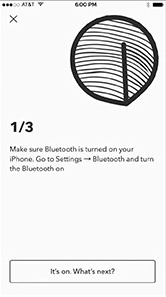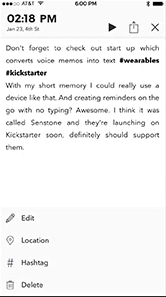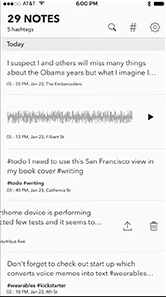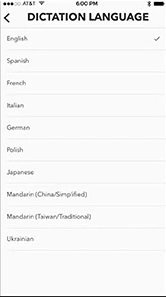If you’re going to talk to yourself, you might as well remember what you’re saying — and the Senstone wants to help you. It’s a piece of jewelry that combines form and function, serving as a 21st century note-taking device — because pen and paper are so last century.
The Senstone is a Kickstarter project that initially launched in November, but was later postponed. It’s now live again, and early bird backers will get their units in July. We managed to get our hands on a unit, but we can’t offer a final verdict yet as it’s still a prototype — there are a set of features that are expected to be in the final product that are not in the review unit.
Jewelry you may not want to wear
For a device that’s meant to sit on your wrist or neck, or be clipped onto a dress or collar, the Senstone isn’t very pretty. While design is largely subjective, the black polycarbonate panel is an incredibly glossy fingerprint magnet, and the wearable is pretty thick.
To be fair, the final production unit won’t use polycarbonate, but will instead feature a scratch-resistant glass screen.
Regardless, the oblong, oval shape isn’t aesthetically pleasing — especially with the pointed edges on both its sides. The necklace it comes with to allow you to wear it as a pendant is just a cheap cord — hopefully the final one is better — but at least it’s easy to slap it on and off. Place the Senstone on the holder sideways and twist. It comes with a clip, and there will be different colors available for the final version.
The strap doesn’t come with it, but it would allow you to wear the Senstone on your wrist like a watch. Keep in mind that you’d have to raise your wrist to your mouth all the time, though, as the company recommends speaking directly into the device, at a distance of at least eight inches from your mouth.
Transcribed notes and a sleek app
The Senstone pendant records voice memos, organizes them, and then translates them into text. Think of it as a hands-free digital notepad. Whether you were just struck by inspiration or need to remember to set a date, the Senstone can help.
The button to record on the prototype is a little slippery and hard to press, but it does the job. For the final production unit, you’ll only have to touch the front screen to start and stop recording. LED lights in the front panel light up in different patterns to indicate what the Senstone is doing — whether it’s actively recording, or if a session just ended.
If you’re in a relatively quiet environment, the Senstone is able to process whatever you say and transcribe it into text via the Bluetooth-connected iOS app. Support for Android is in the works.
The whole process takes about a minute or two after you stop recording (depending on how long your recording is). If your phone isn’t nearby, the device can store up to two and a half hours of recording and will sync with your phone when it’s in range. Its ability to transcribe is fairly remarkable — in quiet environments, it accurately translated long sentences to text fairly quickly with hardly any errors.
The app is well-designed and lets you edit translated text in case there are some errors. You can see the location of where you took a note, and you can play back the recording if you want to hear it again. What’s neat is that you can also use hashtags to organize your memos — just say hashtag and follow it with a single-word tag. You’ll then be able to easily search for your notes via hashtag in the app.
The battery level is indicated on the app, and the company claims it can provide about four days of average use. After making a handful of recordings in two days, our Senstone only went down 10 percent — so it really depends on how many recordings you make. The device rests on a dock to wirelessly charge.
Upcoming features
Unfortunately, in slightly noisy to loud environments, the Senstone didn’t offer text at all — just a voice recording. What should help is a second microphone, which the company plans to add into the final product to help with noise reduction. It’s hard to tell how much the second microphone would help, but in most public environments, the prototype Senstone basically turns into a voice recorder with no text-translating services.
Thankfully, you don’t necessarily have to give up your existing note-taking app — Senstone integrates with Evernote, and the company is promising to integrate more apps. The team has plans to also add in integrations with other kinds of apps like Google Docs and Trello.
Senstone will also be injected with artificial intelligence to understand your surroundings so it can remove noise if you’re in a crowd; add correct punctuation; and recognize emotions and intonation, to adapt to your speaking style and mood.
You’ll be able to snap your fingers to activate a recording session in the final product.
Availability and price
Kickstarter backers can get the the Senstone for $120 — early bird options go as low as $80 — but the final retail price will be $145. It’s a little steep, but if you find yourself forgetting to write down notes when you’re out and about, the Senstone can be a useful tool.
The campaign also offers some interesting ideas on other use cases, such as sending memos to your co-workers. If it works well — and if the company follows through on promised features such as emotion and intonation recognition, AI, and third-party integration — the Senstone could certainly be a compelling, modern-day Dictaphone.
The Senstone will be available for retail, if the Kickstarter is successfully funded, in the fall.
Article originally published in October. Updated on 02-07-2017 by Julian Chokkattu: Added first impressions of the Senstone.






